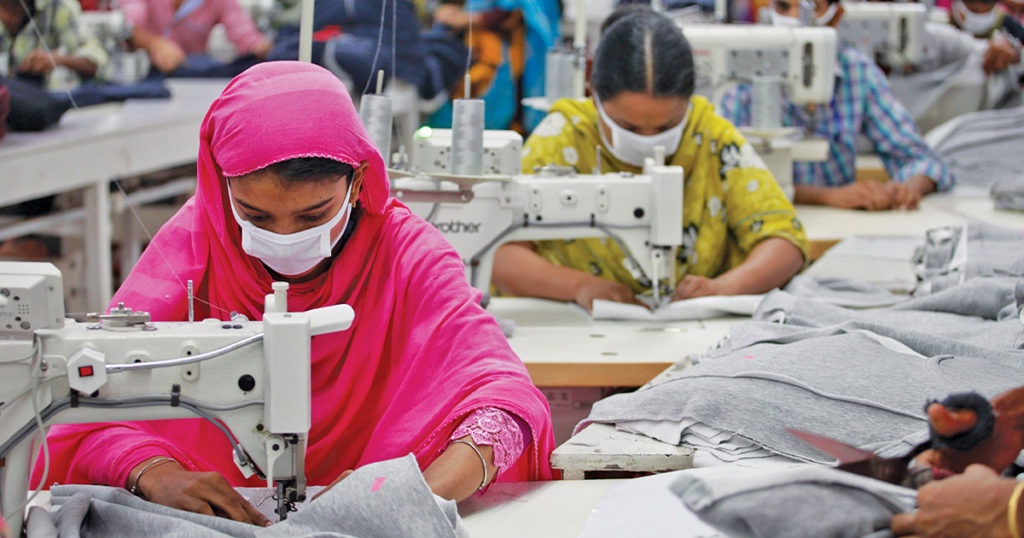

Aditi Mayer is a sustainable-fashion blogger, photojournalist, labor-rights activist, and speaker. Next year, as a National Geographic Storytelling Fellow, she will report on the social and environmental effects of India’s fashion supply chain. We asked her to pose five questions about the future of fashion in a rapidly changing world.
1. The sustainability movement often poses the question, “What is the most eco-friendly [fill in the blank]?” But sustainability requires context, and to understand fashion, we can’t forget that clothing is a product of agriculture—unless it’s derived from synthetic materials like polyester, a byproduct of the fossil fuel industry. Instead of posing one-size-fits-all solutions or defining “eco-friendly” through isolated metrics such as water intake, we need to ask more constructive questions: Is this fiber indigenous to that region? Is the region’s climate suitable for its growth? How can we use native species and indigenous approaches to agriculture to support a biodiverse, sustainable future?
2. If agricultural biodiversity is vital to a sustainable future, we must also question the cultural aesthetics of the fashion industry. Currently, a Western aesthetic is exported globally. Consider retailer H&M’s 2015 arrival in India (for decades it sourced raw materials from the country) or the steady stream of secondhand clothes being imported from the Global North to the Global South, often destabilizing local textile and manufacturing industries. In many textile-rich nations that were ravaged by colonialism—and the tariffs and excise duties that resulted from it—growing movements seek to revive indigenous plant varieties, from organic short-staple cotton in India to the Bangladeshi phuti karpas, which can be spun into the valuable Dhaka muslin. Would a return to regional, ethnically centric clothing revive a set of artisan practices that are inherently tied to these forms of production?
3. The fashion industry cannot operate without the highly skilled labor of garment workers, and yet, while CEOs make millions, average garment workers—most of whom are Black and brown—struggle to get by. In 2016, for example, a labor court ruled that Ross Dress for Less owed four of its garment workers more than $800,000 in unpaid wages; the retailer has yet to pay, despite reporting $12.5 billion in sales in 2020. Amancio Ortega, founder of clothing retailer Zara, is among the 10 richest men in the world, but the company’s garment workers in Myanmar regularly put in 11-hour shifts, six days a week, for as little as $3.50–$4.75 per day. How can we ensure that those who make the fashion supply chain possible receive a fair wage and are able to do so in safe working conditions?
4. The foundation of fast fashion—a term coined by The New York Times in the 1990s to describe Zara’s mission to take a garment from the design stage to stores in only 15 days—is speed, often at the expense of quality, the environment, and workers’ rights. Many brands drop new styles every week, further encouraging a consumer culture built on cheap goods to be discarded in a few months to make way for the next trend. How can consumers be persuaded to slow down—to purchase fewer clothes of more enduring quality? And what measures can be taken to encourage the industry to favor quality over quantity?
5. Although the sustainable and ethical fashion industries are important, they remain niche alternatives to the exploitation that has been normalized for so long. Rather than urge buyers to “vote with your dollar,” advocates are figuring out how to empower those who are exploited the most. There is promising progress: movements like the #PayUp campaign addressed unpaid and canceled orders at the start of the Covid-19 pandemic and helped unlock $15 billion of lost wages for garment workers left destitute in countries like Bangladesh. In Los Angeles, the Garment Worker Center has championed the Garment Worker Protection Act, which would ensure fair wages and better legal protections for such workers. The beast of fast fashion can’t be addressed by buying our way into a new reality. How can we reposition the role of the individual buyer from conscious consumer to consumer activist—someone who can help push for policy changes and material reform?

